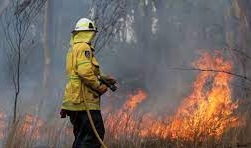Sydney, (Asian independent) The state government of Australia’s Queensland on Wednesday urged local communities to prepare for the upcoming bushfire season, as a wet summer contributed to major vegetation growth.
According to a statement released by the Queensland government, widespread heavy rainfall has led to increased bushfire fuel loads across large parts of the state. With drier-than-average weather conditions expected in autumn, vegetation can dry out quickly, Xinhua news agency reported.
Under above-average temperatures, grasslands in the western parts of northern and central Queensland are forecast to see a peak in fire activity in mid-autumn.
While autumn is not likely to bring significant bushfire activity across the majority of the state, the Queensland government suggested landholders start preparing their properties beforehand.
Meanwhile, the Queensland Fire and Emergency Services (QFES) is working on plans to conduct hazard-reduction burns in the coming weeks.
“Bushfire mitigation is a year-round process and QFES is actively working with its partner agencies to strategise for the cooler months, ahead of the start of bushfire season in August,” said Nikki Boyd, the state’s minister for fire and disaster recovery.
Rural Fire Service Queensland acting chief officer Ben Millington noted that his agency is also busy undertaking preparation for crucial mitigation work to be completed during the cooler months ahead of the bushfire season.
“While we are expecting a normal level of bushfire activity in autumn for most of the state, there is a significant amount of fuel on the ground which will dry out over the coming months,” Ben Millington added.
The fire season in Queensland usually kicks off in July and can extend through to February in southern and far south-western areas. However, the timeframes can vary significantly from year to year, depending on fuel loads, long-term climate, and short-term weather conditions in each area.
For the far North and far North West regions, the warm and sunny winter and spring become most susceptible to bushfires when grasses are dead and fuels have dried.








